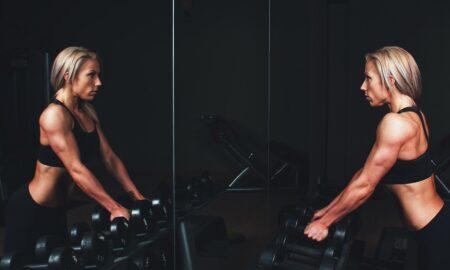The most dedicated trainees are always looking for exercises to target muscles from different angles and to reach parts of the muscles that they think are not being trained well. That thought process led to a fairly simple exercise known as the straight-arm pulldown, a movement that should not be a cornerstone of your workout but that can be included when you have the time.
To perform straight-arm pulldowns, stand in front of the pulldown machine. You can use a long pulldown bar or a shorter straight pushdown bar. Takes a shoulder-width or a slightly narrower grip on the bar with your palms facing down. Your arms should be straight, and the bar should be slightly above shoulder height or at face height. While maintaining the straight-arm position, pull your arms all the way down until your palms are facing your thighs.
This exercise works the teres major (“upper lat”), the latissimus dorsi (“lat”), the long head of the triceps and the posterior deltoid (“rear delt”). Unlike a straight-arm pullover done on a bench, the top range of motion on the straight-arm pulldown is more limited. Another difference is that the straight-arm pulldown is a weight-bearing exercise, while the pullover—because you’re lying on a bench—is nonweight bearing. So on the pulldown your abdominal muscles have to contract isometrically to keep your torso from leaning backward due to the weight. Just be aware that the straight-arm pulldown does not lend itself to heavy weight. The levers are too long due to the straight-arm position.
Many trainees like to finish their back workouts with this exercise. By then the accessory muscles for rowing and traditional pulldowns—including the biceps and brachioradialis—are fatigued. The upper and lower lats may be able to perform a little more work, but the smaller arm muscles can’t. So by bypassing the biceps and brachioradialis and using the long head of the triceps, you can do more work for your back. A traditional three or four sets of high reps should do. Again, you won’t be able to go heavy.
All exercises have risks and benefits. We often refer to this in health care as the risk-benefit ratio. In other words, what do we gain and what do we risk, what’s the likelihood of each, and, finally, is it worth it? Many people have injured a particular ligament on the inside of the elbow. The ulnar collateral ligament, or UCL, is stretched or torn from too much throwing and from any stress that would bow the elbow inward. Unfortunately, the straight-arm pulldown is one of those movements that can stress the ulnar collateral ligament.
A truly straight elbow position locks the elbow somewhat and reduces the amount of load on the UCL; however, if the UCL is sore or hurts, straight-arm pulldowns will generate elbow pain. Luckily, the shoulder shouldn’t have any pain from this exercise, but if the cartilage ring surrounding the socket, the glenoid labrum, is torn, the range of motion of the straight-arm pulldown can stress the labrum and aggravate an already torn one. If you have clicking and pain in your shoulder during straight-arm pulldowns, stop. If you have inner-elbow pain during the exercise, then it’s simply not for you. If you injured your elbow recently, you may be able to wait a few months and try straight-arm pulldowns again.
Train smart, and then train hard.
—Joseph M. Horrigan
Editor’s note: Visit www.SoftTissueCenter.com for reprints of Horrigan’s past Sportsmedicine columns that have appeared in IRON MAN. You can order the book 7-Minute Rotator Cuff Solution by Horrigan and Jerry Robinson from Home Gym Warehouse, (800) 447-0008 or at www
.Home-Gym.com.




















You must be logged in to post a comment Login